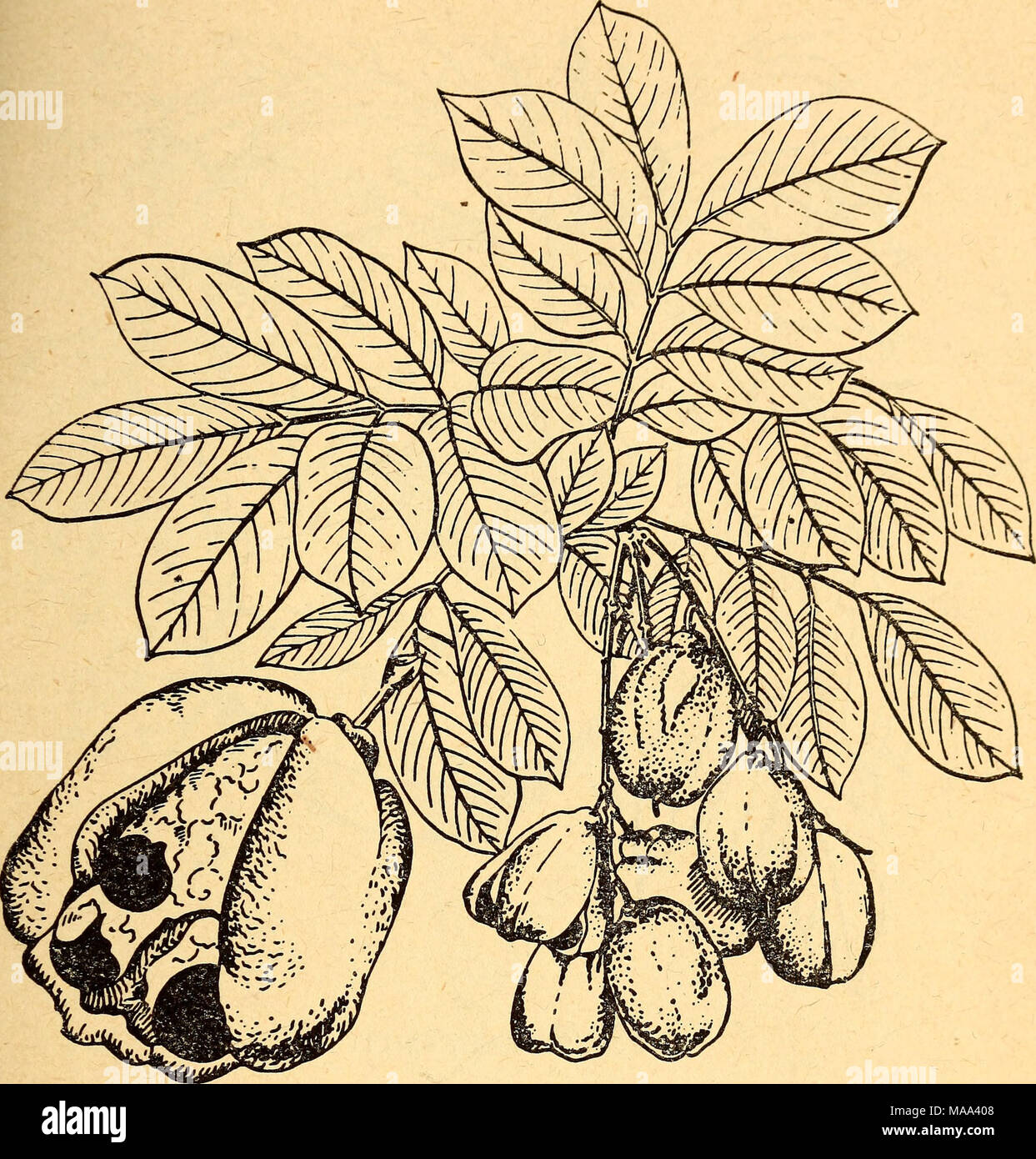. Edible and poisonous plants of the Caribbean region . 32. Akee Blighia sapida The red or orange podlike fruit of the akee has three cells inside each pod and a large, black, shiny seed in each cell. The white fleshy pulp surrounding the seeds may be eaten raw or cooked. This part of the fruit is usually boiled in salt water and fried. CAUTION: The seeds are very poisonous and the fallen fruits, or unripe ones, or those in which the flesh has become dis- colored must not be eaten because they are a deadly poison. The fruit is ripe and a safe and good food if the edible portion (white flesh su

Image details
Contributor:
The Bookworm Collection / Alamy Stock PhotoImage ID:
MAA408File size:
14.3 MB (1,021.8 KB Compressed download)Releases:
Model - no | Property - noDo I need a release?Dimensions:
2187 x 2286 px | 37 x 38.7 cm | 14.6 x 15.2 inches | 150dpiMore information:
This image is a public domain image, which means either that copyright has expired in the image or the copyright holder has waived their copyright. Alamy charges you a fee for access to the high resolution copy of the image.
This image could have imperfections as it’s either historical or reportage.
. Edible and poisonous plants of the Caribbean region . 32. Akee Blighia sapida The red or orange podlike fruit of the akee has three cells inside each pod and a large, black, shiny seed in each cell. The white fleshy pulp surrounding the seeds may be eaten raw or cooked. This part of the fruit is usually boiled in salt water and fried. CAUTION: The seeds are very poisonous and the fallen fruits, or unripe ones, or those in which the flesh has become dis- colored must not be eaten because they are a deadly poison. The fruit is ripe and a safe and good food if the edible portion (white flesh surrounding the seeds) is firm and the orange or red skin is bright in color. In the Caribbean the akee is most commonly cultivated on the moist lowlands. It is also called huevo vegetal and seso vegetal.